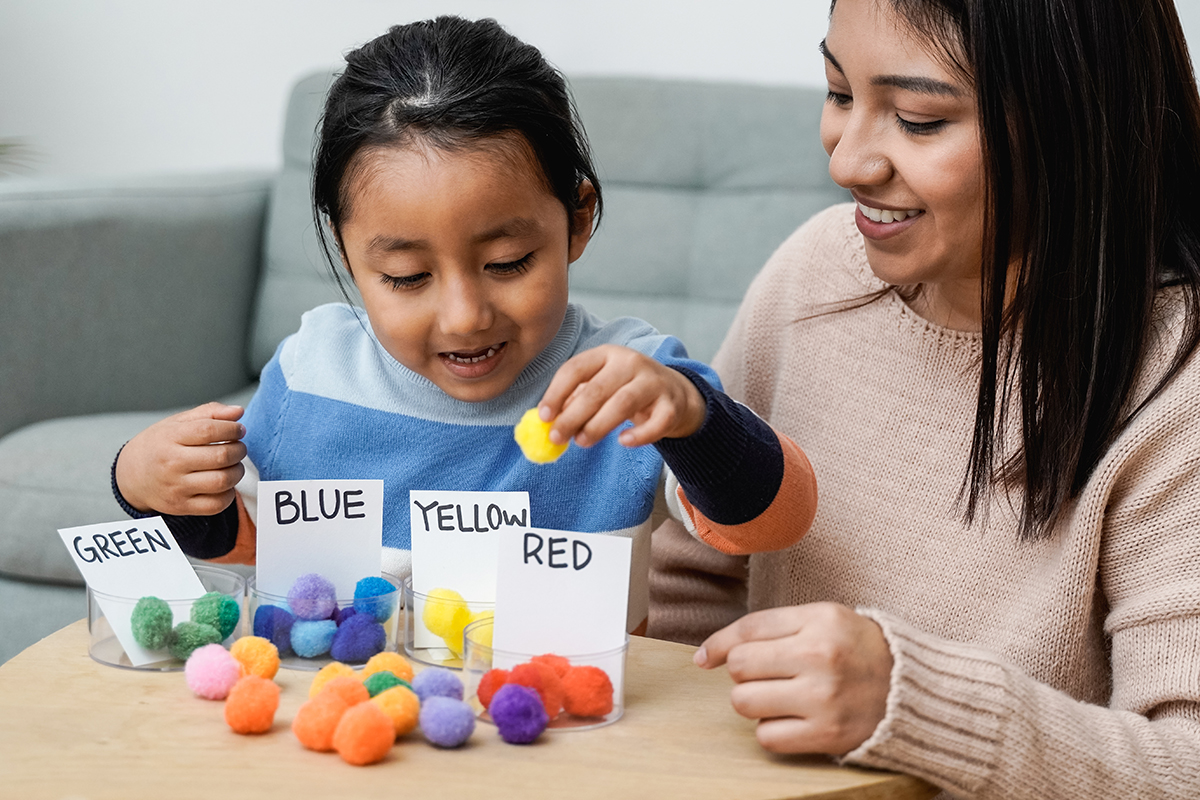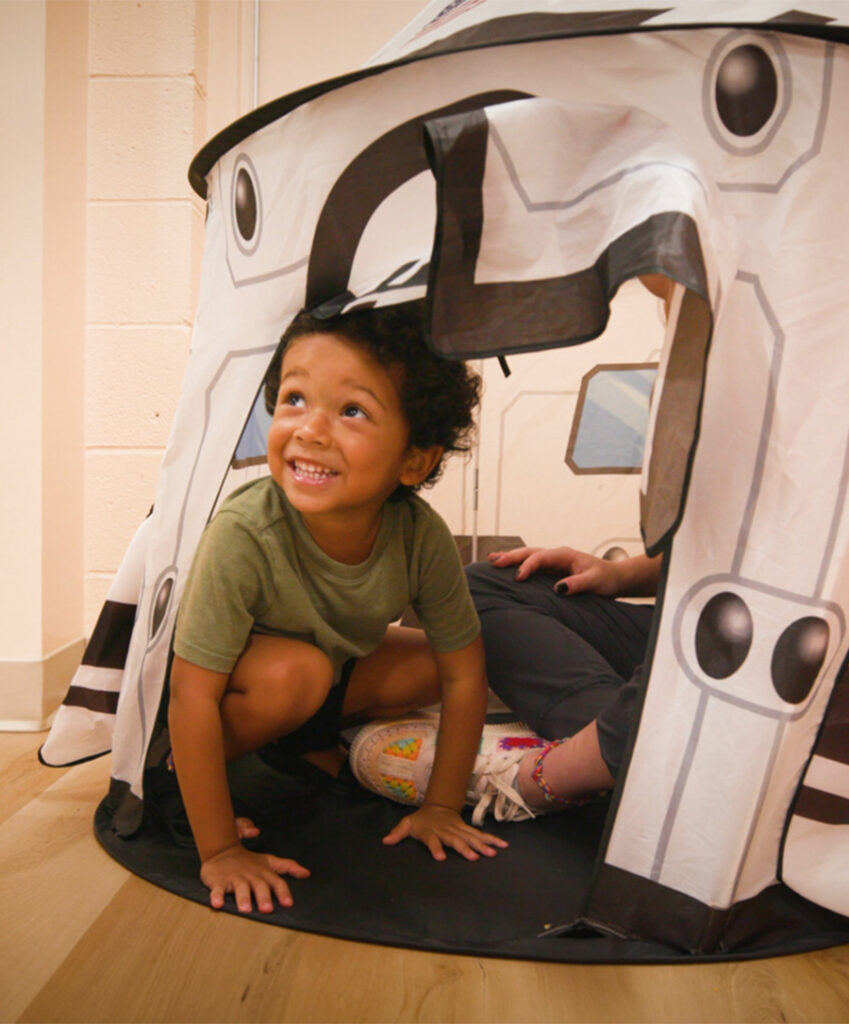If your child is currently enrolled in center-based Applied Behavior Analysis (ABA) therapy, you’ve likely seen firsthand how consistent strategies can lead to meaningful growth. But many parents wonder: How do I incorporate these techniques into our home routines?
The good news is that you don’t need to be a certified clinician to support your child’s progress. With a little guidance and a strong partnership with your ABA provider, you can use everyday moments as opportunities to reinforce the same skills your child is learning in therapy.
Learning how to incorporate ABA therapy techniques into daily life, discovering the most effective strategies at home, and exploring how you can play a key role in supporting behavior, communication, and emotional regulation can empower you beyond the therapy center in your daily life at home.
Why consistency matters in ABA
ABA therapy is rooted in repetition, structure, and reinforcement. When children experience consistency between environments like home, school, and therapy, they’re more likely to generalize and use the skills they learn independently.
Generalization means that a child can apply a learned skill across different settings, people, or situations. For example, if a child learns how to request a snack with a visual card during center-based therapy, the goal is for them to eventually make the same request at home, at school, or during a playdate.
That’s where ABA at home becomes so valuable. When parents and caregivers use similar language, prompts, and reinforcement strategies, it strengthens the connection between therapy and real life. It also allows for more practice, more opportunities for success, and a more unified support system for the child.
How to get started with ABA at home
Bringing ABA therapy into your home routine doesn’t mean creating a classroom or replicating your child’s therapy sessions hour-for-hour. It means identifying small, everyday moments where you can reinforce the same expectations and strategies your child is already working on.
Here’s how to begin:
1. Talk with your child’s team
Regularly scheduled family guidance meetings with your BCBA allow for families to stay up to speed on what is happening during therapy. You will find yourself discussing which skills are targeted in therapy and how they can be supported at home. Here are some questions that you can ask and topics that will be discussed:
- What are my child’s current treatment goals?
- How are skills being taught in sessions?
- What prompts or reinforcement are being used?
- Are there any visuals or materials I can use at home?
2. Choose one or two goals to focus on
Rather than trying to do everything at once, start small. Choose one or two target behaviors, such as requesting items, following a daily routine, or using a calming strategy, and begin practicing them at home.
3. Use natural opportunities
Look for chances to practice skills during normal routines: asking for help while brushing teeth, following directions during mealtime, or making a choice at the store. These are perfect places to apply ABA therapy techniques at home.
4. Stay consistent
Use the same phrases, visual supports, and reinforcement styles your child is familiar with. Repetition helps the skill become more automatic over time.
5. Celebrate success
When your child uses a skill successfully, even in a small way, offer immediate, enthusiastic praise or a preferred reward. Positive reinforcement is a core component of ABA and helps increase the likelihood that the behavior will happen again.
ABA therapy techniques for parents to use at home
You don’t need to be an expert to use ABA therapy techniques for parents. Many of the most effective strategies are simple, flexible, and easy to fit into your family’s daily life.
Here are several widely used ABA methods you can apply at home:
1. Positive reinforcement
This means rewarding a behavior you want to see more often. The reward could be praise, a sticker, extra playtime, or anything that motivates your child. Reinforcement should be:
- Immediate: Given right after the behavior
- Specific: “Great job asking for help!” instead of just “Good job”
- Meaningful: Based on what your child enjoys
Example: When your child puts their dish in the sink without being asked, you say, “I love how you cleaned up right away. High five!”
2. First/then language
This structure helps children understand what is expected before a reward or a preferred activity. It’s great for transitions and building independence.
Example: “First, clean up the toys, then we’ll go outside.”
You can also use visuals to support this concept, such as two cards with images for “clean up” and “outside.”
3. Visual schedules
A visual schedule outlines your child’s routine using pictures, symbols, or words. This reduces anxiety, increases predictability, and supports transitions between activities.
You can make a schedule for the whole day or just for a single routine, like bedtime or getting ready for school.
4. Task analysis
This technique breaks complex tasks into small, manageable steps. You can teach each step individually and build toward the full routine.
Example: Getting dressed might include:
- Get shirt
- Put head through
- Put one arm in
- Put other arm in
- Pull shirt down
Each step can be taught with prompting and reinforced until it becomes routine.
5. Prompting and fading
Prompts can be verbal, visual, gestural, or physical and help guide your child toward the desired behavior. The key is to use them only as needed and gradually reduce them over time (fading).
Example: You point to the sink as a gesture when saying, “Time to wash your hands,” and over time, you say the phrase without pointing.
6. Modeling
Modeling means demonstrating the desired behavior for your child to imitate. This can be a powerful teaching tool, especially when paired with praise or reinforcement.
Example: You show your child how to wave goodbye and say “Bye!” then encourage them to do the same.
7. Errorless learning
This approach helps your child succeed by providing support before a mistake is made. It builds confidence and reduces frustration.
Example: If your child is learning to identify colors, you might start by holding up a red block and saying, “This is red!” before asking them to repeat it.
How to apply ABA techniques during daily routines
One of the strengths of ABA therapy techniques at home is that they can be used naturally throughout the day, with no special equipment or long lesson plans required.
Here’s how ABA principles can be integrated into common routines:
Morning
- Use a visual schedule to outline the steps for getting ready
- Offer choices for breakfast: “Do you want cereal or eggs?”
- Use first/then language: “First brush teeth, then tablet time”
Mealtime
- Practice requesting items using words, pictures, or signs
- Reinforce sitting at the table or trying new foods with praise
- Use modeling to show expected table manners
Transitions
- Provide a warning before changes: “In 5 minutes, we’ll clean up.”
- Use a timer and show your child how to check it
- Reinforce smooth transitions with a favorite activity afterward
Play
- Use turn-taking games to teach social skills
- Narrate your child’s actions to support communication
- Reinforce sharing, waiting, or cleaning up
Bedtime
- Keep a consistent bedtime routine
- Use calm visuals or a checklist to reduce anxiety
- Reinforce independent steps, such as putting on pajamas or brushing teeth
How to adjust techniques to your child’s needs
Every child is different. What works for one may not work for another, and that’s okay. The benefit of ABA is that it’s highly individualized. If a strategy isn’t working, your child’s therapy team can help you modify it.
Tips for adjusting techniques:
- Follow your child’s motivation. Reinforcers should reflect what your child enjoys, not just what you think they “should” like.
- Use preferred communication methods. Whether your child uses speech, sign language, AAC, or visuals, match your prompts to their strengths.
- Start with high-success activities. Begin with tasks your child can do with confidence and gradually increase complexity.
- Be patient. New skills take time to learn. Celebrate progress, not perfection.
Your ABA provider can help you track what’s working at home and adjust as your child grows.
How ABA therapy supports the whole family
ABA isn’t just about the child. A strong ABA program will support the entire family, including siblings and caregivers.
At Children’s Specialized ABA, we emphasize regularly scheduled family guidance meetings. We help parents and caregivers learn to support their child’s goals, ask questions, and receive personalized strategies to use at home.
We also offer:
- Home-based ABA therapy
- Center-based services
- Diagnostic evaluations
- Early intervention programs
- Speech and occupational therapy
- In-school and after-school support
Our team collaborates with families to ensure that skills taught in therapy carry over to real life because learning doesn’t stop when the session ends.
ABA therapy techniques at home make a difference
The most powerful thing you can do as a parent is to stay involved. You’re already doing so much by learning about ABA therapy techniques, asking questions, and showing up for your child daily.
When you use ABA therapy techniques for parents, you help reinforce the skills your child is learning in therapy. And when you bring ABA at home into your routines, even in small ways, you create a more connected, supportive environment where your child can thrive.
You don’t have to do it alone. Your child’s therapy team is there to guide you, and at Children’s Specialized ABA, we’re committed to helping every child and every parent feel supported every step of the way.
Contact us to learn how we can help
If you’re looking for support in using ABA therapy techniques at home, Children’s Specialized ABA is here for you. Our team of behavior analysts and clinicians works closely with families to create personalized plans that make it easier to bring the benefits of therapy into everyday life.
We proudly serve families in New Jersey, North Carolina, Maryland, and Arizona, offering services such as home-based and center-based ABA therapy, family guidance, and diagnostic evaluation.
Let’s work together to support your child’s progress in and beyond the therapy center. Call 201.979.0772 or complete our online form today to speak with our team.






